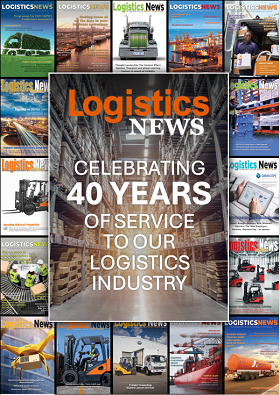In today’s fast-evolving logistics landscape, the question is no longer if you should digitise, but how far along you are on your digital transformation journey. While many South African logistics operations have embraced software solutions, a surprising number still rely on paper-based processes or struggle with ineffective technology partnerships that don’t deliver the insights they need.
According to Frost & Sullivan surveys, about 60% of businesses have appified their operations through digitisation, highlighting a clear shift toward tech-enabled logistics and supply chain management. This transformation is not static but rather a continuum - from reactive, manual approaches to proactive, data-driven systems harnessing the power of integrated software and smart devices.
The evolution of logistics digitisation
In the early days, digitisation meant replacing paper forms with software that provided real-time visibility - dashboards where managers could see what was happening in the field. But today, we are entering a new era of smart system convergence. Whether through multiple specialised providers or a single integrated platform, operations are gaining multifunctional, actionable insights that empower better supply chain decision-making.
The next frontier lies in predictive insight and artificial intelligence, enabling predictive analytics that forecast operational challenges before they occur. Yet, regardless of where a company sits on this spectrum, one truth remains constant: the heart of logistics digitisation beats in mobile devices and smart mobility.
The unsung hero - Mobile devices
Often dismissed as mere “hardware,” mobile devices are actually the brain and central nervous system of supply chains. From drivers on the road to warehouse employees scanning RFID tags and auditors checking stock, these devices are mobile offices powering critical workflows.
Yet, paradoxically, many operations treat these devices as dumb, single-purpose tools rather than sophisticated command centres. IT and operations teams frequently overlook them, either because managing these devices is complex and ever-changing or because their daily KPIs leave little room to invest in unlocking device potential.
The challenges of mobile device management
One of the biggest paradoxes in logistics is that while companies invest millions in software and technology, they often underinvest in the devices enabling those systems. It’s common for businesses to buy the cheapest device and connectivity package available, ignoring that these devices power entire operations.
Many companies don’t even have basic visibility into their device fleets - how many devices they own, where they are, who is using them, how much it’s costing them, the health status of the device or whether some have gone offline for days, possibly stolen or lost. Without this insight, it’s impossible to optimise device usage, manage costs, or secure sensitive data from risks like unauthorized app downloads.
This “iceberg” of unknown data beneath the surface means companies are missing out on opportunities to improve uptime, adoption, understand their actual device utilisation statistics, troubleshooting statistics and operational efficiency.
Unlocking the full potential with smart mobility solutions
The journey from basic mobile device management (MDM) to fully integrated operational insight is a game changer. MDM software can help operations track device performance metrics - uptime, battery life, app usage - and flag potential issues before they disrupt operations but most companies are not utilising the full functionality and feature potential of the mobile device management solution.
But it goes beyond monitoring. Smarter mobility solutions provide behavioural analytics to identify top and bottom users of data consumption, ensure security compliance, and streamline troubleshooting. Coupled with scalable connectivity options like load shifting and failover, logistics fleets become more resilient and cost-efficient.
Flexibility and innovation in mobility hardware
Another critical aspect is hardware flexibility. Companies often get locked into long-term contracts or outdated devices that don’t support evolving operational needs. The key is to find partners who enable scaling - up or down - and customisation to meet specific challenges.
Specialised companies focus on mobility solutioning and can help free up operations and IT teams from the burden and complexity of managing their mobile fleets and help to solve unique operational challenges as well as helping to centralise device insight on a single portal with a live dashboard view of their device fleet.
Moreover, mobile devices can transcend their operational role by becoming learning platforms. Imagine drivers utilising downtime to engage with micro-learning modules, enhancing skills while increasing device value and justifying wider device deployment across teams.
Conclusion
Mobile devices are no longer just tools; they are strategic assets central to the future of logistics. Unlocking their full potential through smarter management, integrated analytics, and flexible hardware solutions amplifies operational performance and drives smarter, data-driven decisions.
Operations that rethink mobile devices as mini command centres will lead the way in the digital transformation journey, gaining a critical competitive advantage in an increasingly complex and fast-moving industry.

Danielle Afriat, CEO of Mint Solutions







